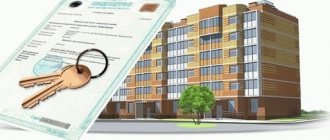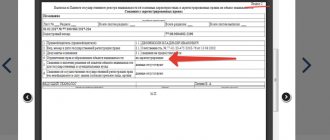Russian legislation in the field of real estate and land law has created many interesting scenarios in the event that you start construction on land that is not assigned to you without permission.
Recent changes in laws and regulations, designed to improve the process of registering such buildings, have added even more various difficulties and barriers to the procedure. How to legalize a house on a plot of land? This problem is solved by different methods.
What is it for
A building erected without special permission is considered unauthorized. For example, if the land plot on which the house stands was obtained by a person illegally or is not suitable for the construction of certain real estate objects.
Such options include the creation of a private residential building on the site for agricultural activities. Unauthorized buildings are not considered a person’s property, but a house built on a site can be legitimized in two ways:
- transfer into ownership through the court;
- simple actions using the provisions of Law No. 93. Basically, the owner of the building does not think about legalizing it. But until the process of legitimizing the building, a citizen is not considered its full owner. Simply put, he will not be able to sell the house, give it away, bequeath it, leave it to close a loan, or register at this address.
In addition, the state has the right to demand that an illegally built house be transferred to the ownership of the municipality or ask that the building be removed. That is why lawyers advise legalizing a house built without special permission. The process goes much faster if a person has rights to the plot on which the house is built.
ATTENTION! If the site is not yet owned by the developer, it is necessary to obtain the right to own this land in advance.
How to register ownership of real estate based on a court decision
Article 14. Grounds for state cadastral registration and state registration of rights
1. State cadastral registration and (or) state registration of rights are carried out on the basis of an application, with the exception of cases established by this Federal Law, and documents received by the rights registration authority in the manner established by this Federal Law.
2. The grounds for state cadastral registration and (or) state registration of rights are:
1) acts issued by state authorities or local self-government bodies within their competence and in the manner established by the legislation in force at the place of publication of such acts at the time of their publication, and establishing the existence, emergence, transfer, termination of a right or restriction of a right and encumbrance real estate object;
2) contracts and other transactions in relation to real estate, concluded in accordance with the legislation in force at the location of the real estate at the time of the transaction;
3) acts (certificates) on the privatization of residential premises, completed in accordance with the legislation in force in the place of privatization at the time of its completion;
4) certificates of the right to inheritance;
5) judicial acts that have entered into legal force;
6) acts (certificates) of rights to real estate, issued by authorized government bodies in the manner established by the legislation in force at the place of issue of such acts at the time of their issue;
7) a boundary plan, technical plan or survey report prepared as a result of cadastral work in the manner established by federal law, a map-plan of the territory approved in the manner established by federal law, prepared as a result of complex cadastral work (hereinafter referred to as the map-plan of the territory);
7_1) approved scheme for placing a land plot on a public cadastral map when carrying out state cadastral registration of a land plot formed for the purpose of providing it to a citizen for free use in accordance with the Federal Law “On the specifics of providing citizens with land plots that are in state or municipal ownership and located on territories of the constituent entities of the Russian Federation that are part of the Far Eastern Federal District, and on amendments to certain legislative acts of the Russian Federation"; (The clause was additionally included from May 2, 2020 by Federal Law of May 1, 2020 N 119-FZ; as amended, entered into force on July 30, 2020 by Federal Law of July 29, 2020 N 247-FZ. _____________________________________________________________________ Clause 7_1 of Part 2 of this Article is valid until January 1, 2035 - see paragraph 5 of Article 20 of Federal Law No. 119-FZ of May 1, 2020. _____________________________________________________________________
 other documents provided for by federal law, as well as other documents that confirm the existence, emergence, transition, termination of a right or limitation of a right and encumbrance of a property in accordance with the legislation in force at the place and at the time of the emergence, termination, transfer of rights, limitation of rights and encumbrances on real estate; (Clause as amended, entered into force on January 1, 2017 by Federal Law of July 3, 2020 N 361-FZ.
other documents provided for by federal law, as well as other documents that confirm the existence, emergence, transition, termination of a right or limitation of a right and encumbrance of a property in accordance with the legislation in force at the place and at the time of the emergence, termination, transfer of rights, limitation of rights and encumbrances on real estate; (Clause as amended, entered into force on January 1, 2017 by Federal Law of July 3, 2020 N 361-FZ.
9) the occurrence of circumstances specified in federal law.
3. State cadastral registration and state registration of rights are carried out simultaneously in connection with:
1) creation of a real estate property, except for cases where state cadastral registration is carried out on the basis of a permit to put a capital construction project into operation, provided by a state authority, local government body or an authorized organization that carries out state management of the use of atomic energy and public administration in the implementation of activities related to the development, production, disposal of nuclear weapons and nuclear power plants for military purposes, by the State Corporation for Space Activities "Roscosmos", in the manner prescribed by Part 1 of Article 19 of this Federal Law; (Clause as amended, entered into force on April 14, 2020 by Federal Law of April 3, 2018 N 60-FZ; as amended by Federal Law of August 3, 2020 N 340-FZ.
2) the formation of a real estate property, except for the cases provided for in paragraphs 8-10 of part 5 of this article; (Clause as amended, entered into force on January 1, 2020 by Federal Law of July 3, 2020 N 361-FZ.
3) termination of the existence of a real estate property, the rights to which are registered in the Unified State Register of Real Estate;
4) the formation or termination of existence of a part of a real estate object, which is subject to restrictions on the rights and encumbrances of the corresponding real estate object, subject to state registration in accordance with the federal law, except for the case provided for in paragraph 11 of part 5 of this article. (Clause as amended, entered into force on January 1, 2017 by Federal Law of July 3, 2020 N 361-FZ.
4. State registration of rights without simultaneous state cadastral registration is carried out subject to the availability in the Unified State Register of Real Estate of information about the real estate object, the right to which is registered, in connection with:
1) the emergence of the right to the created property in the case specified in paragraph 1 of part 5 of this article;
2) the emergence of the right to the formed land plot in the cases specified in paragraphs 8-10 of part 5 of this article; (Clause as amended, entered into force on January 1, 2020 by Federal Law of July 3, 2020 N 361-FZ.
3) termination of rights to the property (except for termination of rights in the cases specified in paragraph 3 of part 3 of this article);
4) transfer of the right to the property;
5) confirmation of rights to real estate that arose before the date of entry into force of Federal Law of July 21, 1997 N 122-FZ “On state registration of rights to real estate and transactions with it”;
6) confirmation of rights to real estate that arose by virtue of federal law;
7) restriction of rights to the property and encumbrance of the property, as well as termination of such restrictions and encumbrances.
5. State cadastral registration is carried out without simultaneous state registration of rights only in cases where it is carried out:
1). , disposal of nuclear weapons and nuclear power plants for military purposes, by the State Corporation for Space Activities "Roscosmos", in the manner prescribed by Part 1 of Article 19 of this Federal Law; (Clause as amended, entered into force on April 14, 2020 by Federal Law of April 3, 2018 N 60-FZ; as amended by Federal Law of August 3, 2020 N 340-FZ.
2) in connection with the termination of the existence of a real estate property, the rights to which are not registered in the Unified State Register of Real Estate;
3) in connection with the formation, termination of existence of a part of the real estate object, which is subject to restrictions on the rights and encumbrances of the corresponding real estate object, if, in accordance with federal law, such restrictions and encumbrances are not subject to state registration in the Unified State Register of Real Estate;
4) in relation to all premises and parking spaces in a building, structure, simultaneously with the implementation of state cadastral registration for this building, structure, or if the ownership of this building, structure is already registered in the Unified State Register of Real Estate; (Clause as amended, entered into force on January 1, 2020 by Federal Law of July 3, 2016 N 315-FZ; as amended by Federal Law of July 3, 2020 N 361-FZ.
5) in relation to a building that is an apartment building and premises that are common property in such a building, simultaneously with the implementation of state cadastral registration of apartments located in such a building;
6) due to changes in the main characteristics of the property;
7) in relation to land plots formed during the implementation of complex cadastral works, occupied by squares, streets, driveways, embankments, squares, boulevards, water bodies, beaches and other public facilities, the formation of which is provided for by the territory surveying project approved in the manner established by the legislation on urban development (including in the case of recognition of the location of the boundaries or parts of the boundaries of such a land plot as controversial in the manner established by federal law) and which, after formation, will relate to public lands, public areas, as well as land plots occupied by buildings, structures, unfinished construction projects ;
 in relation to land plots formed on the basis of a decision to seize a land plot and (or) a property located on it for state or municipal needs;
in relation to land plots formed on the basis of a decision to seize a land plot and (or) a property located on it for state or municipal needs;
9) in relation to land plots formed from lands or land plots, state ownership of which is not delimited, in accordance with Part 14 of Article 41 of this Federal Law;
10) in relation to a land plot or land plots formed by redistribution of lands or a land plot in state or municipal ownership, and a land plot in private ownership, on the basis of a decision to approve the layout of the land plot or the consent of a state authority or body local government to conclude an agreement on the redistribution of land plots in accordance with the approved land surveying project; (The clause was additionally included from January 1, 2020 by Federal Law of July 3, 2020 N 361-FZ)
11) in relation to a part of a land plot that is in state or municipal ownership, which is formed for the purpose of establishing an easement in relation to it. (The clause was additionally included from January 1, 2020 by Federal Law of July 3, 2020 N 361-FZ)
How to legitimize
If you have ownership rights to the land, all that remains is to legitimize the object built on it. The law gives the opportunity to do this quickly under the “dacha amnesty”, which will be active until 2020.
Every citizen of Russia has the right to simple registration of unauthorized buildings in relation to those located on sites for certain purposes: for individual housing construction, gardens, vegetable gardens, housekeeping.
The dacha amnesty applies to a huge number of plots and unauthorized buildings erected on them. These are not only dachas, but also residential buildings, bathhouses, garages, and barracks.
Legally registered unauthorized buildings become real estate objects that the owner can dispose of in different ways: put up for sale, allocate shares, give away, bequeath, and so on.
Registration of the right to a residential building, which is located on a land plot with permitted use for individual housing construction or personal household, consists of submitting a list of documentation to the Rosreestr organization in person or by mail.
List of documentation:
- citizen's passport (with copy),
- a power of attorney examined by a notary, if the owner carries out everything through a representative,
- a document confirming a person’s right to land (if the process of registering a plot has been completed and information about it is stored in the Unified State Register of Real Estate, then there is no need to bring it),
- cadastral passport for construction,
- documentation of payment of the duty.
ATTENTION! Do not forget that with simplified registration - “dacha amnesty” - you do not need to bring permission to construct and put the building into operation.
How to register a house as a property through court
We offer our services for registration of a house through the court:
Registration of a house through court
| PRICE | TERM |
| 5 - 6 months |
INCLUDED IN THE PRICE:
- Preparation and submission of a claim.
- Representation at court hearings.
- Obtaining a positive court decision.
- Receiving an extract from the Unified State Register at home.
- Title documents for the site
- Power of attorney for our employee
- Refusal to issue permits or refusal of Rosreestr to register a house
- Documents confirming the costs of building a house (in some courts)
- Judicial or pre-trial construction examination (depending on the court)
- Technical plan for the house
- Technical report of the house or house assessment report (depending on the court)
- Receipt for payment of the state fee for consideration of the claim in court
All owners of residential buildings built without a building permit or notice of planned construction, on lands with permitted use for individual housing construction and personal subsidiary plots, are faced with a refusal to register the house as their own.
Citizens expected to register a house under the dacha amnesty, which was extended until March 1, 2020, but since July 2020 the procedure has changed and a building permit is required for registration. When asked how to get it if the house has already been built, the refusal does not provide any explanation.
A refusal to state registration of ownership of a residential building usually states that, in accordance with Article 22 of the Civil Code of the Russian Federation, the construction of a residential building without obtaining a construction permit is a sign of unauthorized construction, and the owner of a land plot who has carried out the unauthorized construction of a residential building cannot, by law, acquire ownership of such a house.
The conclusion states that the refusal of state registration of property rights can be appealed in court.
Having received such a refusal, many see no other choice but to go to court in order to recognize their right to unauthorized construction.
Through the court
If you are unable to obtain the right to own a house through a simplified procedure, you will have to go to court.
An official application, drawn up in writing, must be given directly to the land owners .
If the interested citizen does not have rights to the land, it will be very difficult to obtain a decision in his favor in court. What documents are needed for legalization is a rather important question. The official application must be submitted to the court along with the documentation listed below:
- technical passport for construction, certified by BTI;
- the applicant's passport;
- rights to the site;
- an extract from the Russian register confirming the absence of rights of other persons to the house;
- documents that can certify the fact of construction and reflecting the financial expenses incurred by the citizen for the construction;
- conclusion of the fire service, technical and sanitary worker on the actual condition of the structure.
Carrying out construction and technical expertise will help prove that the building was erected without violating basic residential standards . During the verification of the case, the master’s conclusion will be a big plus in favor of the applicant.
How to recognize ownership through court
VIDEO ON THE TOPIC: How to register ownership of a house in 2018 without a building permit?
Recognition of ownership of residential real estate gives a citizen the opportunity to rent out the property, sell it, transfer it by inheritance or give it as a gift. If you cannot prove your authority in a simple way or the Rosreestr branch refuses to carry out registration, you should file a statement of claim to go to court. The appeal is made to the city judicial authority. On what grounds a statement of claim is drawn up, what mandatory conditions it must contain and other important information about the recognition of property rights, we will consider in more detail in the article.
To go to court, compelling reasons are required, for example, a falsely formalized refusal of inheritance. The grounds for filing a claim for recognition of ownership of a residential building may include:.
A statement of claim for recognition of property rights must be drawn up applying all known legal rules to such documents. Written documentation is always required when drawing up a statement of claim for filing in court. It is possible to use a printed form, which can be obtained online or directly from the judicial authority.
It is unacceptable to make corrections in the document recognizing ownership of a residential building or to make grammatical errors when registering it. The text of the application must be reliable, otherwise the court will refuse to consider the written application.
The content of the statement of claim for recognition of ownership of a residential building must include the following points:. For a detailed study, a sample of drawing up a statement of claim for recognition of ownership rights can be viewed at the link.
Real estate can pass to an heir under a will, whose privileges must be confirmed by a notary. A statement of claim for recognition of ownership of a residential building by inheritance is drawn up if:. Often, the recipient of an inheritance may face dissatisfaction with other legal successors. In this case, the statement of claim is the beginning of legal proceedings. Recognition of property rights will allow the true heir to enter into an inheritance and receive all kinds of powers to manipulate the property at his own discretion.
The content of the statement of claim for recognition of ownership of a land plot and a house differs in that the document lists the characteristics of not only the house, but also the land plot. In order for the judicial authority to legalize this power without any problems, you should: Attached to the statement of claim, in addition to title documents for residential real estate, are also documents for the land plot.
Recognition of property rights is carried out by a judge when comparing the arguments of the participants in the process and, on the basis of them, the issue of satisfying the plaintiff’s demands is decided. To submit a claim, the plaintiff must systematically collect the necessary documentation to begin legal proceedings in the case of legalizing the transfer of privileges to residential real estate.
The following is attached to the statement of claim for recognition of ownership of a residential building:. Both the originals of the above-mentioned acts of title and their duplicates will be required. A statement of claim for recognition of ownership of a residential building in the amount of 2 pieces is submitted to the judicial authority, and the third sample is left with the applicant. The plaintiff may appear in person before the court to file a claim, send the document by registered mail with notification, or apply through an authorized representative. But usually citizens turn to the first type of judicial authority, i.e.
The statute of limitations for recognition of ownership of real estate is three years. The countdown begins from the moment the plaintiff realizes that his privileges have been violated. Restoring the claim period by filing an application with the court is possible only for good reasons, such as serious health conditions, absence from the country or other circumstances that did not allow you to appear in court earlier.
The state fee for filing a claim for recognition of property rights is determined by the article. For filing a statement of claim, the applicant will be required to pay according to the following algorithm for the cost of the claim:. The time period before filing a claim for recognition of ownership of a residential building and issuing a decision by a judge can be no more than 60 days.
Drawing up and announcing the final verdict takes 5 days. Within one day, the announced decision regarding the statement of claim comes into force. You can challenge a court decision within a ten-day period during which it just comes into force.
If a claim for recognition of ownership of a residential building is rejected, you can file an appeal to the Arbitration Court if the interested person is confident that he is legally correct. To prove that you are right, you should bring into the case testimony and other documents that allow you to open and consider the case from the other side. The statement of claim for recognition of property rights must be based on new facts of the evidentiary base.
You can also be convinced that you are right if you prove that the judge exceeded his powers. It is possible to achieve a positive decision on a claim for recognition of ownership of real estate if the reliability of the evidence presented is confirmed. Deeds of Power of Attorney Wills Agreements Statements. It is important to know Statement of claim for recognition of ownership by inheritance How to write a statement of claim for recognition of ownership of a garage?
How to write a statement of claim for recognition of ownership of a land plot? Statement of claim for recognition of ownership of an unauthorized construction How to file an application for recognition of a thing as ownerless? How to invalidate an apartment donation agreement? If you have questions, consult an attorney. Statement of claim for termination of the purchase and sale agreement and return of funds.
Drawing up a letter of termination of the contract. Application to appeal a court decision. Declaration of renunciation of inheritance. Statement of claim for recognition of ownership of an unauthorized construction. Statement of claim to establish paternity. Filing a claim for termination of a telephone purchase and sale agreement. Statement of claim for damages. How to submit an application for a refund for services not provided? Application to the arbitration court on procedural succession.
Drawing up a free rental agreement for non-residential premises. Drawing up an act of acceptance and transfer of goods. Counterclaim to determine the child’s place of residence.
Is it possible to terminate the share participation agreement and return the money? Drawing up a contract for website promotion. Drawing up a certificate of acceptance and transfer of the construction site to the contractor.
Divorce is coming. The house is registered in the name of the spouse. If the house is not officially divided during a divorce through the court, can the spouse take most of the money when selling the house?
Registration of a house through the court In order to register a built house through the court, you will need to provide a package of documents. It includes: refusal to issue a building permit, refusal to put the house into operation, refusal to register in a simplified manner, confirmation that the house is located within the boundaries of the site, conclusion of the necessary departments about the absence of violations of sanitary, fire, construction and design standards and rules The conclusion is that the house does not pose a threat to the health and life of people. You can obtain all conclusions from the design organization, which has a certificate from an SRO of a self-regulatory organization. If a house is built on a dacha or garden plot, then it does not need to be registered in the cadastral register. In this case, you simply fill out a declaration, information for which can be taken from the project documentation.
Reasons for refusal
There are different options for the development of events. Judicial authorities may refuse to legalize a building in certain situations:
- the built house affects the interests of other people;
- the structure was erected with various types of violations, and therefore poses a threat to the lives of citizens;
- the house was built in violation of town planning standards;
- The citizen did not provide all the documentation confirming his rights to the house.
If you have used a simple scheme for obtaining special papers for construction, you can be refused in only two ways: if the specialist has not been given the entire package of documents, and also if the house is located on a land plot that is not included in simple registration, according to Federal Law No. 93.
Price
Land legislation has established two real methods of legitimizing self-construction. The first is to legalize the construction on your land by administrative means. To do this, you should bring all the necessary documentation to the local administration. The second is to come to court with an official statement.
Each of the ways will require money, because this is not a free procedure. Thus:
- The administrative method will require obtaining a construction permit and drawing up technical documents. To do this, you need to order a technical passport, which will give you the opportunity to issue proof that your personal building was erected in compliance with new construction and fire safety standards.
- And living in and near the house is considered a safe process for you and others. At this stage, the loss will amount to five thousand rubles. In addition, you will need to obtain a document on the safety of chimneys and various conclusions. Because of this, you will need to spend another five thousand rubles. As a result, expenses will range from ten to fifteen thousand rubles;
- The judicial method is also paid. So, you will have to pay a state fee, its amount is set as a percentage of the cost of building a house. You may need to seek a specialist opinion.
If you look into this, you can come to the conclusion that costs will be incurred in both the administrative and judicial methods of legitimizing the house. However, in one case you can pay less. Which option is better, you can decide for yourself.
Registration options
If we consider the problem in practice, the easiest way is to register an individual residential building that was erected in a country house.
IMPORTANT! Having applied the law on dacha amnesty in practice, all you have to do is fill out a declaration and submit documentation for registration.
The process of registering ownership of an illegal building, which was erected on land allocated for personal housing construction, will be carried out completely differently . The state registrar works on entering information into the Unified State Register of Real Estate on the basis of:
- statements;
- document for the land plot;
- official act.
For a structure that was built without permission before 2018, when contacting the Unified State Register of Real Estate, it was allowed to carry out the procedure without a certificate.
If there is no building permit, then the building can be registered only after a special passport is issued. Only after receiving a passport can you proceed to registering ownership of the house.
Step-by-step instructions for obtaining ownership of real estate in court
- Preparation and drawing up of a statement of claim. This can be done either independently or with the assistance of a professional lawyer.
- Submitting a claim and related documents to the courts.
- Waiting for the court's decision and its entry into force.
- Registration of ownership rights to an apartment in the Rosreestr branch.
Drawing up a statement of claim
When drawing up an application, it is necessary to rely on the provisions of Article 131 of the Civil Procedure Code.
Based on the requirements of the Civil Procedure Code, the statement of claim must reflect the following points:
- Full name of the court to which the statement of claim is sent,
- Personal data of the applicant - last name, first name, patronymic, address at the place of registration and place of residence, contact details,
- Personal data of the defendant - last name, first name, patronymic or full name of the organization (if the defendant is a legal entity), registration address,
- Description of the controversial situation - the reasons for the violation of property rights to real estate, a detailed presentation of all the important details of the case,
- Motivational requirements of the plaintiff,
- List of documents attached to the statement of claim,
- Cost of claim
- Date of compilation and personal signature of the plaintiff.
A sample claim is available.
Submitting a claim and documents to court
The claim is filed in the district or magistrate court at the location of the apartment.
The following package of documents is attached to the statement of claim:
- Technical and cadastral passports of real estate,
- Documents confirming the grounds for the emergence of rights to property (purchase and sale agreement, agreement with the developer, etc., documents on making payments when purchasing a home are also suitable as evidence),
- Certificate of acceptance and transfer of the apartment (if available).
- A document confirming payment of the state fee,
- The applicant's general passport.
Waiting for the court decision and its entry into force
After filing a claim, a court date is set, as a result of which a final decision on the claim is made. As judicial practice shows, such claims are mostly considered in favor of the plaintiff.
After receiving the court decision, you will need to collect the missing documents to register property rights in Rosreestr.
Registration of property rights in Rosreestr
To obtain a certificate of ownership of an apartment, you must submit the following documents for state registration:
- Application for registration of property rights,
- The court's decision,
- Receipt for payment of state duty.
Time frame for registering ownership of an apartment through the court
Based on Article 154 of the Code of Civil Procedure of the Russian Federation, cases on recognition of ownership rights to real estate are considered within up to two months. This is in theory; in practice, the time frame for considering a case can drag on for up to several years, especially if it is in the interests of the other party to delay the decision as much as possible.
The process of registering property rights after receiving a court decision, depending on the region, can take from 10 to 30 days. Thus, the time frame for registering ownership of an apartment in court can be from 3 months to several years.








